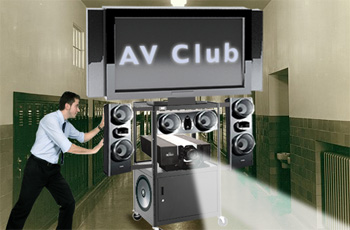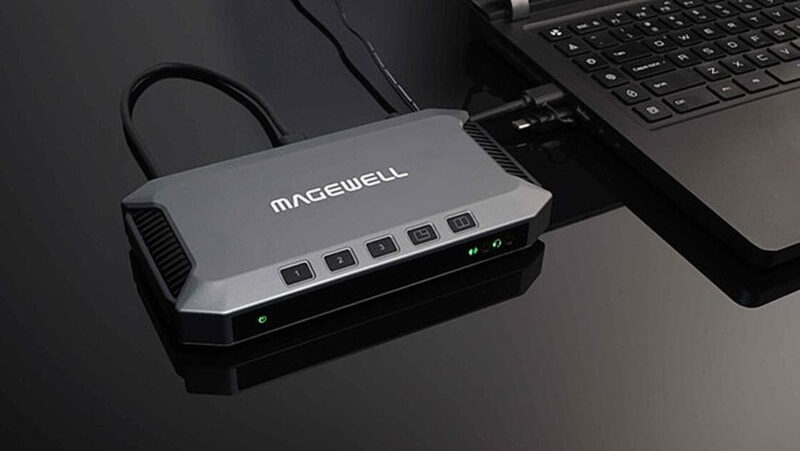The AV Technologically-Challenged
As we wind down the  calendar year, here’s a light-hearted column on one of the AV Club pet peeves. That being, some end users just don’t get it — AV technology, that is.
calendar year, here’s a light-hearted column on one of the AV Club pet peeves. That being, some end users just don’t get it — AV technology, that is.
While their seemingly naive attempts at using AV technology may be innocent enough, the impact ranges from embarrassing (mostly for them) to resource-wasting (mostly of other’s), as they flounder about cursing the “thingies” that fall short of having mind reading auto pilot “easy” buttons. The good news is, in our video-saturated world, their ranks are diminishing in comparison to those with no AV anxiety.
Of course, we in the AV Club know the idea of ProAV is to facilitate communications and/or entertainment for a group of people, not to cause a frustrating experience for any individual. And, the vast majority of end user presenters using AV for entertaining and/or communications recognize that with some reasonable allowance for Murphy’s Law the AV “payback” is typically proportional to their own technological aptitude.
While having lunch recently with an old friend and former coworker, I was reminded of an extreme case of the technology-challenged. As bench techs at a regional secondary education AV equipment repair depot, we saw many variations in both the technology and end user AV sophistication. But our jaws dropped at what came in the door one day.
Like most shops, we used multi-part work order forms in order to track the repair work. To keep the service work orders attached to the equipment, we recommended tying “toe tags” to the equipment handle or cord and then stapling the multi-part form to that. Overtime, many folks, including ourselves, found we could skip the toe tag and just fold the service tag form over once and around the power cord, handle or similar appendage then stapling it against itself. There were times when one of us described this method over the phone, when asked: no big deal, or so it seemed.
In comes an (presumably faulty) external computer disk drive. The drive, as was typical at the time, used a flat ribbon cable with an almost equally flat connector on the end. The cases with an “orange peel” finish were near impossible to get tape to stick to. While a challenge to make sure the service tag stayed with the device (many industrious people, unprompted, would put them in a box and tape the tag to the outside), this individual interpreted our “instructions” to staple the form to … and to be clear – I mean through … the flat ribbon cable. And not just one staple: there were also remains of several unsuccessful attempts (staples half falling out).
Granted, we all had a hearty laugh, and made fun at being this clueless about the cable’s function. But the underlying issue was: could someone be this technology challenged as to the function of the cable (and contemporary technology)? After an interesting phone call, which included making sure they were “good for” a new cable assembly before we even diagnosed the original problem complaint, we were satisfied they were in fact clueless.
Clearly, this individual should not have been in a position of being responsible (in any form) for handling or supporting technology. And while more resources, besides the fatal wound to the costly cable, were wasted in explaining how they could have kept the service tag with the device, they were simply not suited to dealing with technology — period. This can also be said for the occasional real end user that is similarly AV technology challenged. However, least we all take license to “write off” real problems with end user incompetence, it is the AV professional’s role to always help those willing to be helped.
This story is proof positive that the customer is not always right. No matter what level of common sense is assumed, sometime the technology challenged can’t be helped. But, we must also be aware that this doesn’t give us a “buy” on removing barriers to intuitive and effective use of AV communications and entertainment technology.
In the end, if the technology-challenged must draw off our limited resources, let’s hope they see some benefit to AV technology. And if we’ve, in good conscience, determined there is no hope adapting the technology or their usage of same… we can always hang the remnants on the wall for years of fodder to techie talk and amusement!
The views expressed in this column do not necessarily reflect the views of the authors’ employer(s), past or present.
Greg Bronson, CTS-D, applies AV technologies in the development of innovative learning spaces for higher education. Greg spent the first 10 years of his career as AV technician and service manager, with the past 12 years as an AV system designer and project manager. Bronson currently works for Cornell University and has also worked for two SUNY (State University of New York) campuses as well as a regional secondary education service depot. Bronson is the originator of concept for Infocomm’s Dashboard for Controls and has had completed projects featured in industry publications. You can reach Greg at gregthetechie@netscape.net





